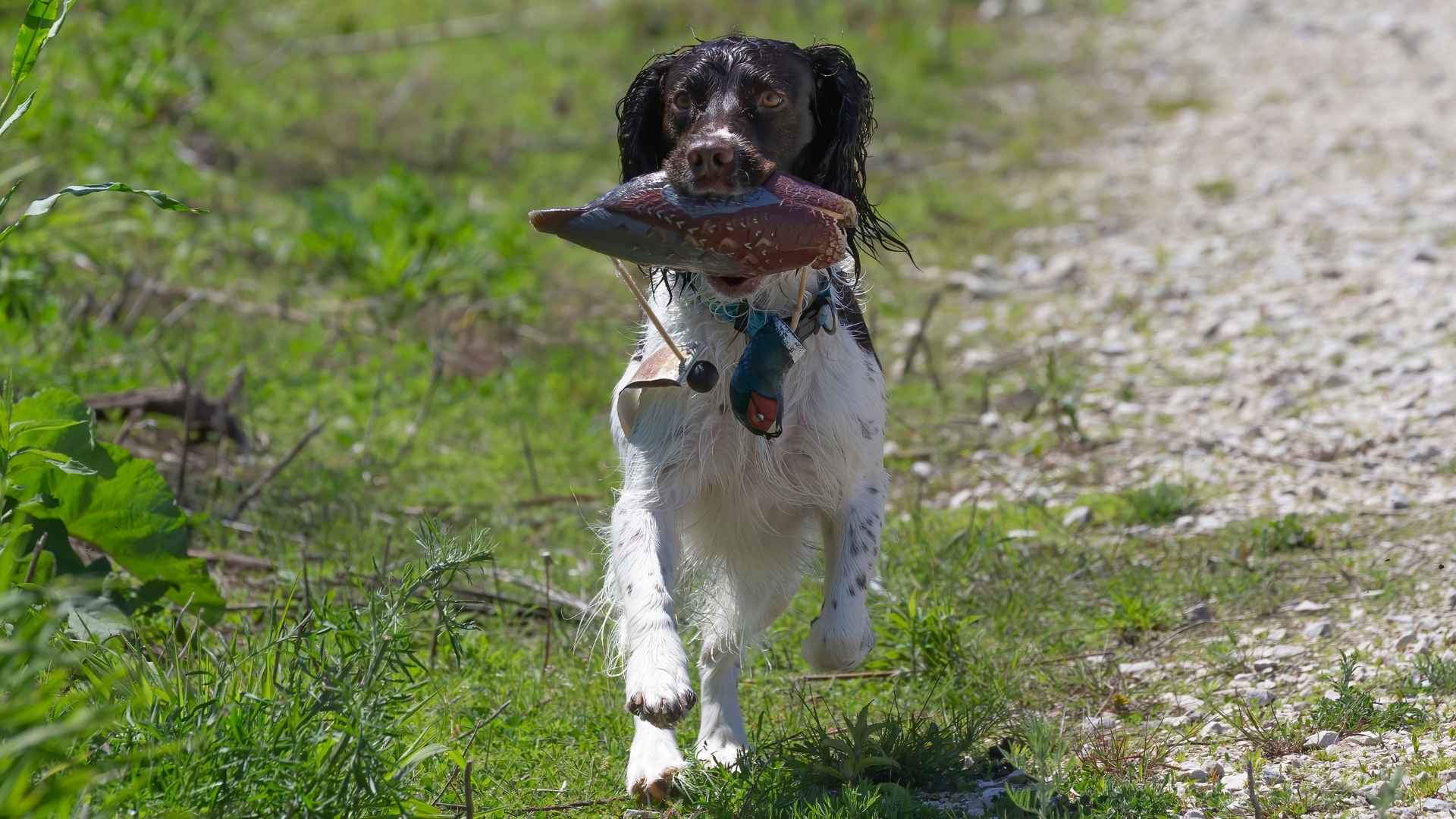For families who crave adventure and love spending time outdoors, high-energy hunting dogs are the ultimate companions.
These breeds were specially developed to work hard, tracking, retrieving, and navigating challenging terrain alongside hunters. As a result, they come packed with impressive stamina, sharp senses, and an unstoppable drive to stay active.
If you enjoy hiking, running, or simply staying busy, these energetic dogs will keep up with your lifestyle and then some. But don’t be fooled—these pups aren’t just about energy; they’re also incredibly loyal and affectionate family members who thrive on regular exercise and mental challenges.
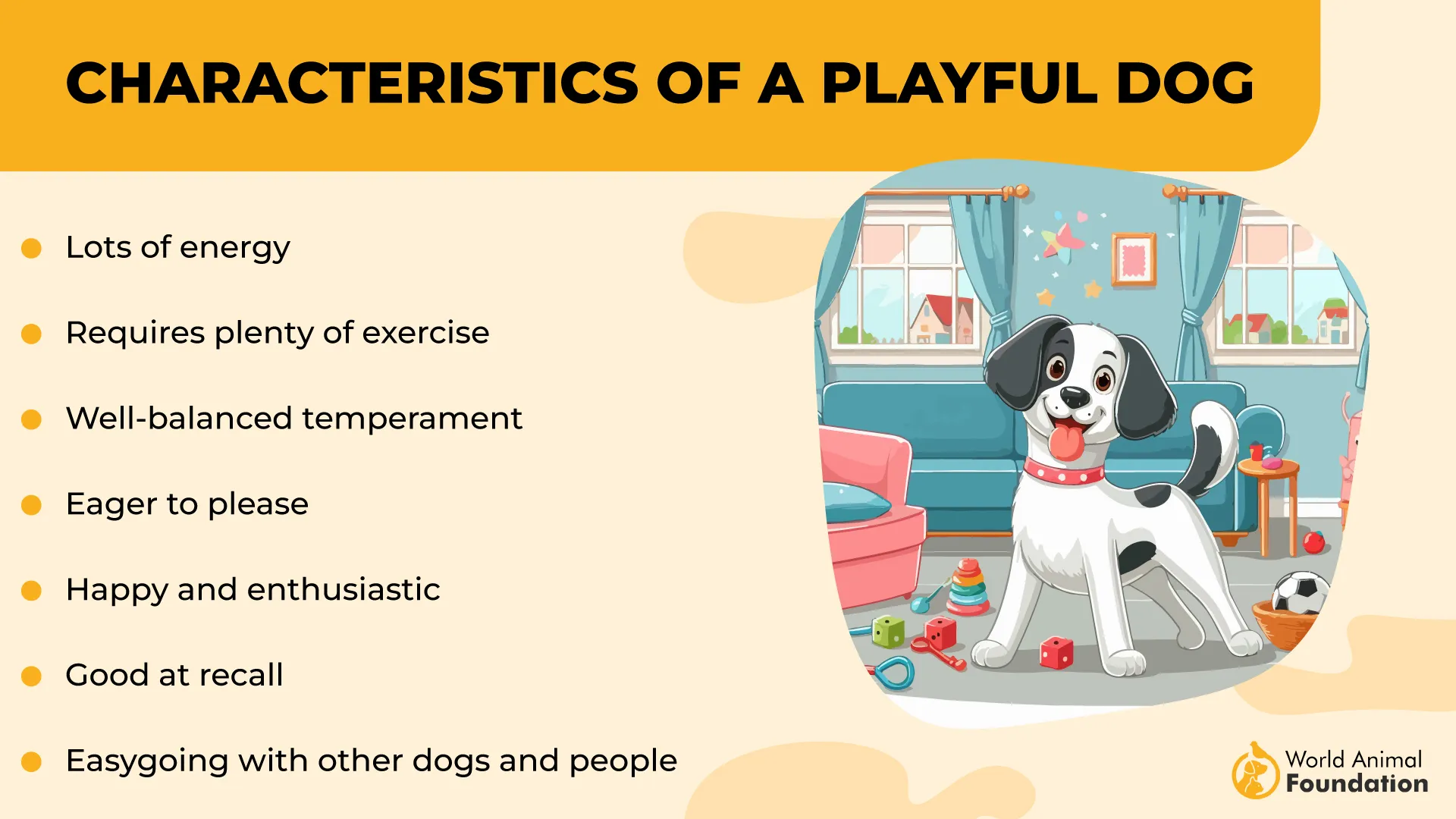
However, their high energy means they need plenty of daily movement and stimulation to avoid boredom and the mischief it can bring.
If you’re ready to embrace an energetic partner who will motivate you to get outside and explore, a high-energy hunting dog might be the perfect fit for your family’s adventurous spirit.
High-Energy Hunting Dog Breeds
1. Pointer
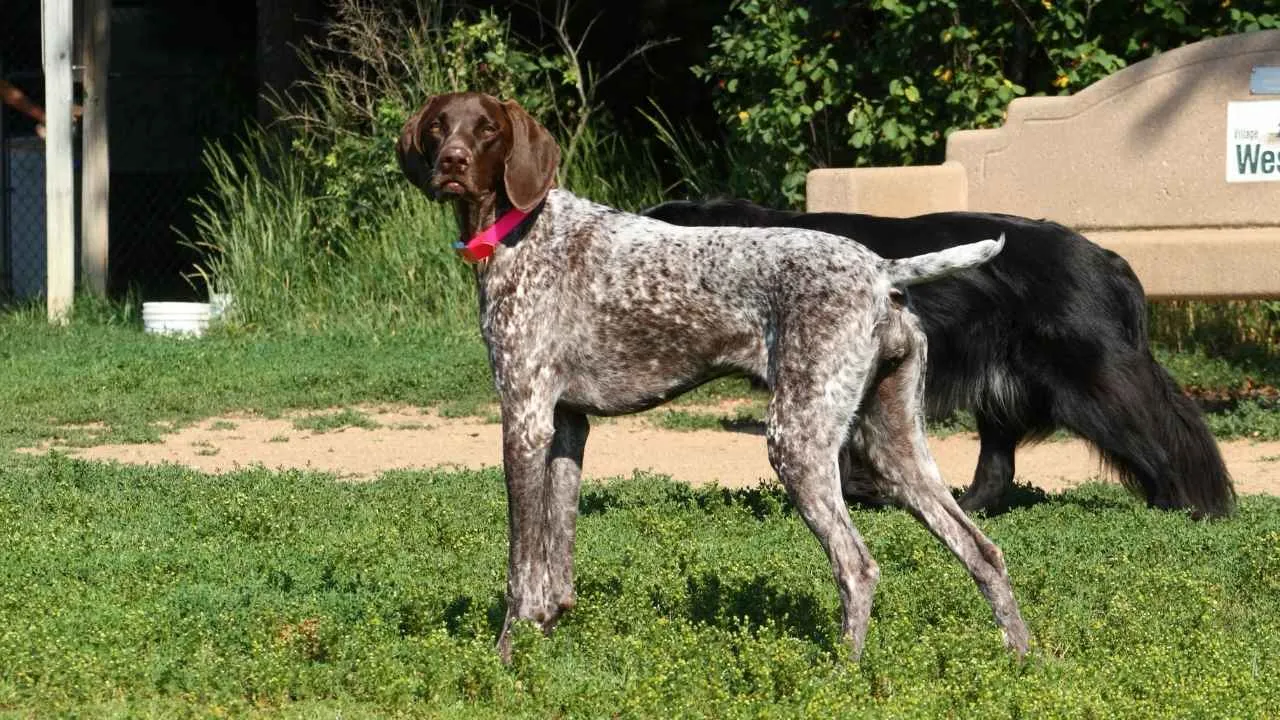
If you’re looking for a dog that thinks “relaxing” is a four-letter word, meet the Pointer—a high-octane, game-tracking machine developed in Germany and designed to never hit the brakes.
These dogs weren’t bred to just sit pretty; they were created to track, point, and retrieve game, even in water. In other words, they’re the full outdoor adventure package—think canine Swiss Army knife with a tail.
Pointers are fast, energetic, and come with a built-in GPS powered by their noses. Seriously, they’ve been bred to follow their nose, which means if there’s a smell worth chasing, they’re probably halfway across the park before you can say, “Wait!” That’s why keeping them mentally and physically stimulated is non-negotiable.
Pro tip: If you’re not planning to take your Pointer hunting, they’ll still need at least 1 to 2 hours of solid exercise daily. And no, a leisurely walk won’t cut it. Think fetch marathons, hiking trails, or agility courses—these dogs want cardio.
Despite all this go-go-go, Pointers are surprisingly low-maintenance when it comes to grooming. Their short coats shed moderately and won’t need endless brushing.
Pointers also make excellent family dogs, especially with kids who can keep up with their playful energy. After a long day of exploring, they’ll gladly switch to cuddle mode and snooze next to their humans.
Important note for new dog owners: Pointers aren’t ideal for first-timers. Their energy and working-dog mindset require experienced handlers who know how to channel that drive into something productive (and not your furniture).
2. German Shorthaired Pointer
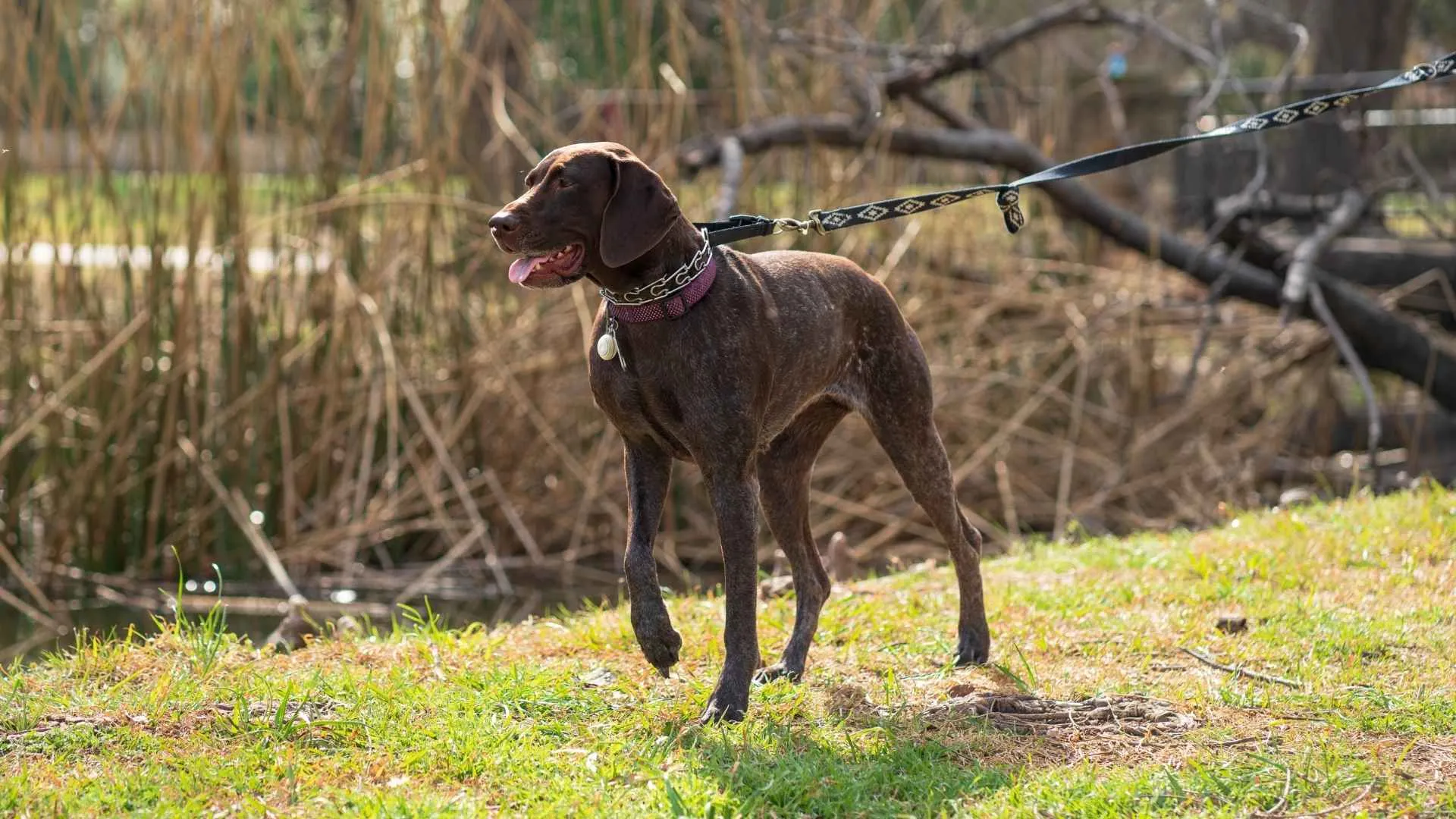
The German Shorthaired Pointer, also known as a GSP, is your Pointer on caffeine. These dogs are bird dog royalty, bred to point, retrieve, and cover miles of terrain like it’s just another Tuesday. They’re not just about looking pretty in the field (though their ticked and patched coats are stunning)—they’re out there getting things done.
What sets GSPs apart is their signature move: when they catch a scent, they freeze and point, standing still with their nose locked in the direction of the prey. It’s like nature gave them built-in radar, and they’re not afraid to use it.
These medium-sized dynamos typically stand 21–25 inches tall and weigh 45–70 pounds, making them perfectly built for both power and agility. Color-wise, you’ll usually see them in liver (brown) and white, either solid or stylishly spotted—think canine camouflage, but make it fashion.
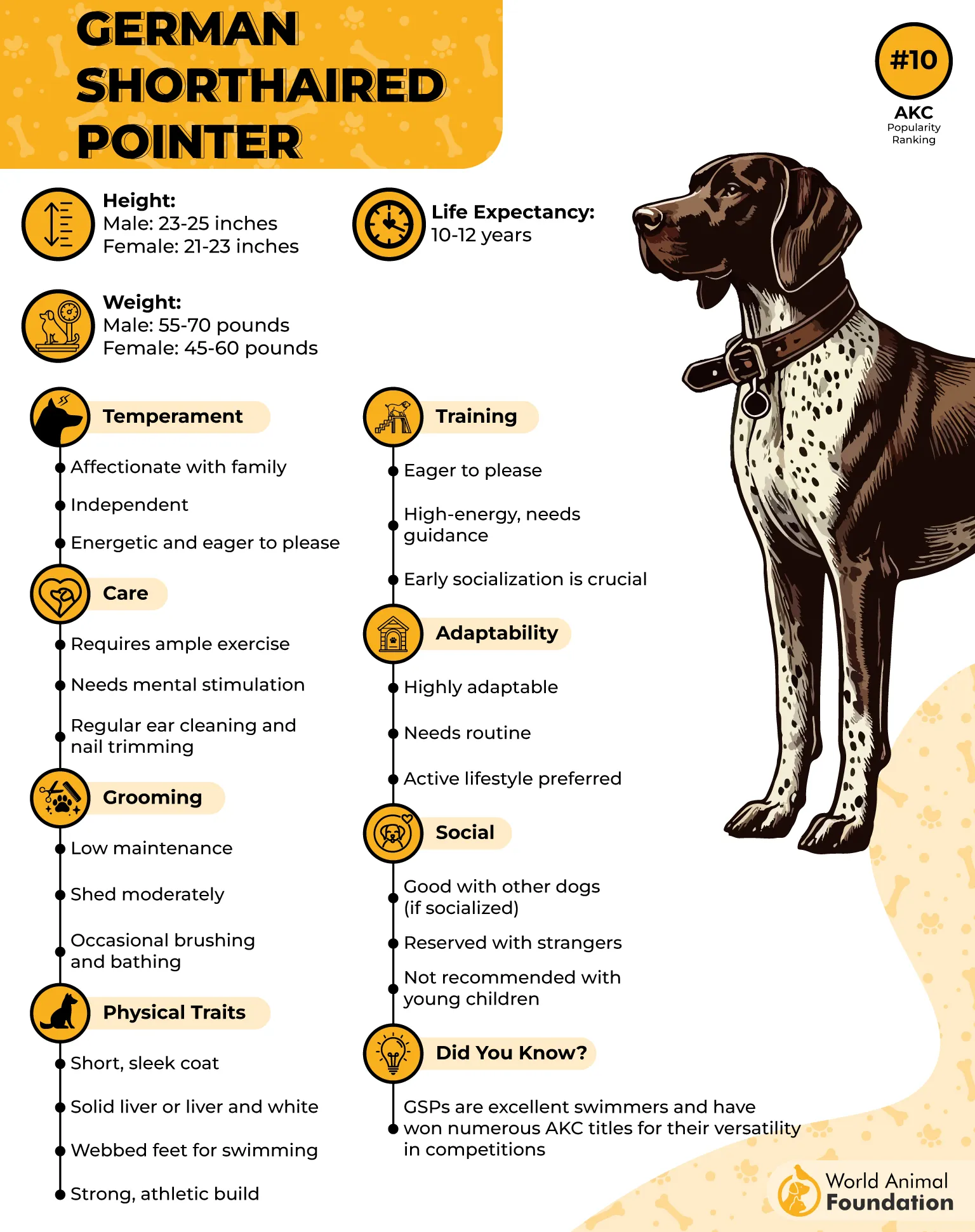
As per PetMD, German Shorthaired Pointers retain a strong prey drive, which is great for the field—but not so much if you have pet birds or pocket-sized critters at home. Their instincts are strong, and they will chase.
GSPs thrive in active households where intense daily exercise is a way of life. An hour of fetch? That’s just foreplay. They need running, swimming, hiking—you name it. And like their Pointer cousins, walking won’t be enough. They want jobs, not strolls.
What’s more, these pups are super smart and trainable, making them excellent working dogs or athletes. But watch out—if you don’t keep their minds and bodies busy, they’ll find their entertainment. (Spoiler: it might involve your couch cushions.)
3. Brittany
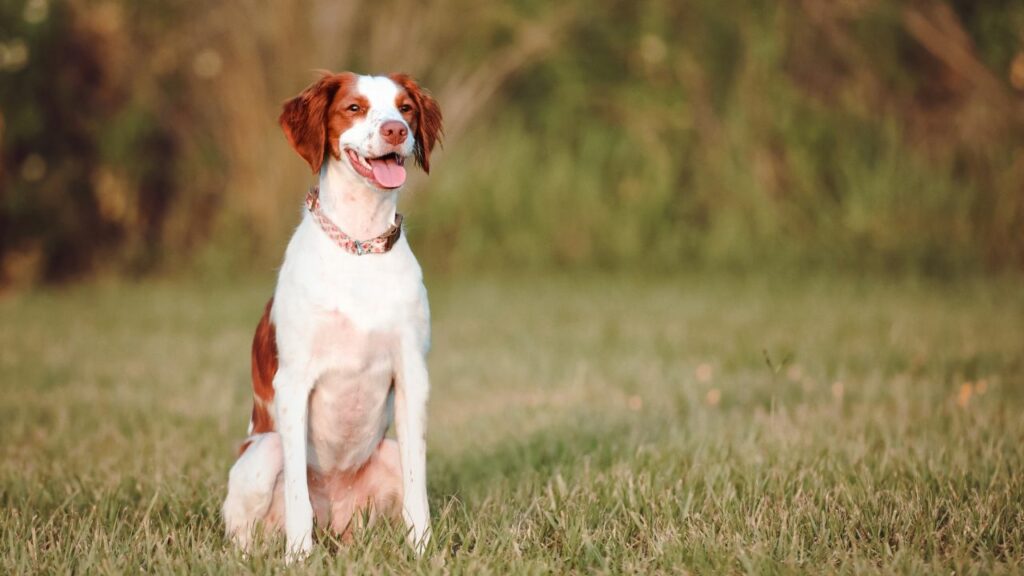
Ah, the Brittany—the dog that looks like it belongs on the cover of a country lifestyle magazine but moves like it’s training for a triathlon.
Standing about 20 inches tall, the Brittany is smaller than a setter but leggier than your average spaniel—basically, it’s the supermodel of the sporting group, dressed in white with bold splashes of orange or liver. But don’t let the pretty coat fool you. Beneath that polished look is a gundog powerhouse.
According to the American Kennel Club (AKC), Brittanys are cherished on both sides of the Atlantic for their agility, energy, and sheer hunting talent. In the field, they’re stylish and laser-focused. At home, however, they’ll expect you to match their vibe, which is somewhere between “let’s jog a marathon” and “now let’s go again.”
They’re best suited to active homes, like, really active. If you hike, bike, or jog before breakfast, you might have found your four-legged soulmate.
Without a proper energy outlet, Brittanys can become restless, barky, and even try to Houdini their way out of the yard. That’s why a fenced space and plenty of structured activity (bonus points for training or hunting time) are essential.
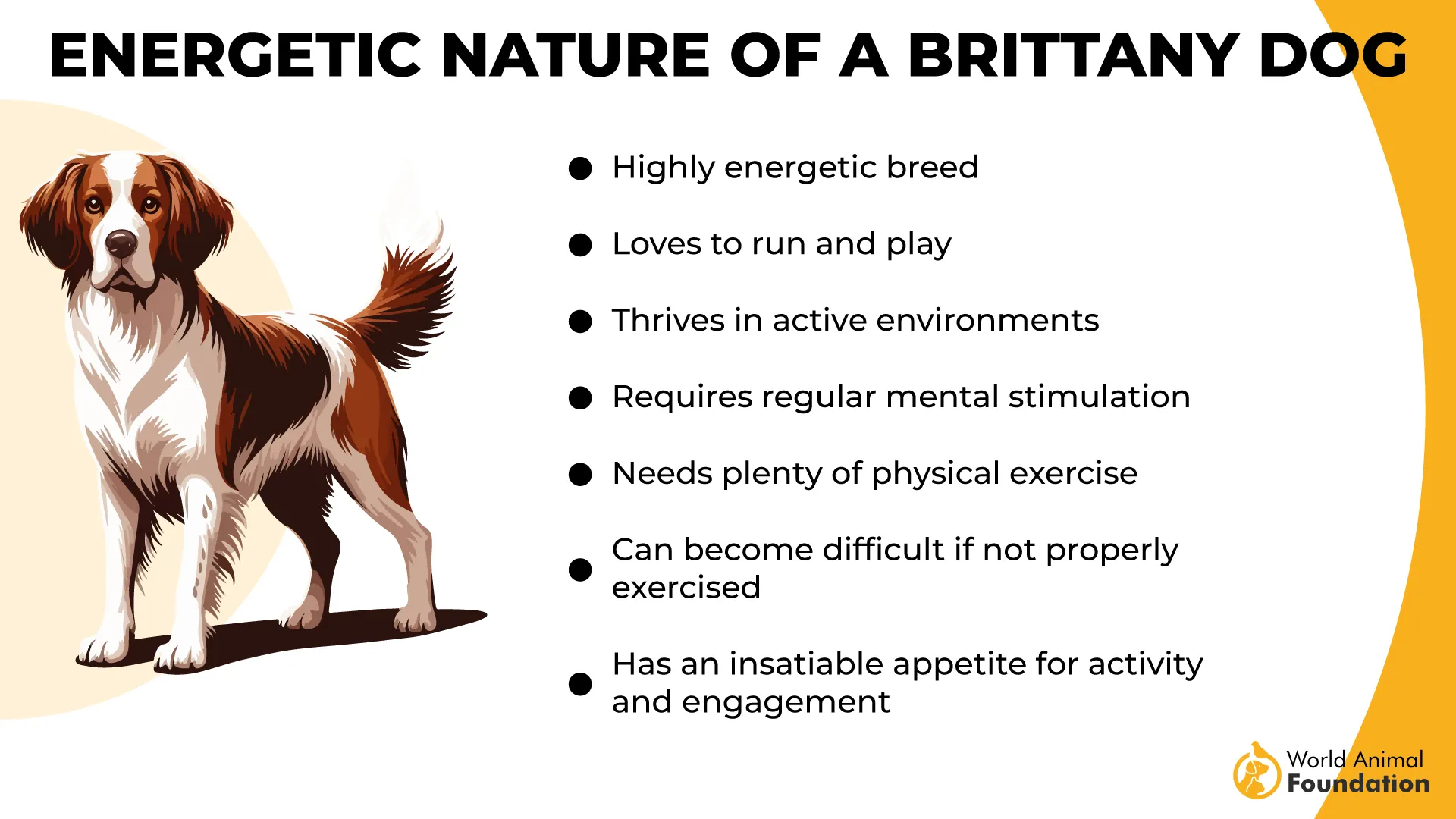
They’re not just hunters—they’re smart, social, and loyal to the bone. But boredom? That’s their arch-nemesis.
4. English Springer Spaniel
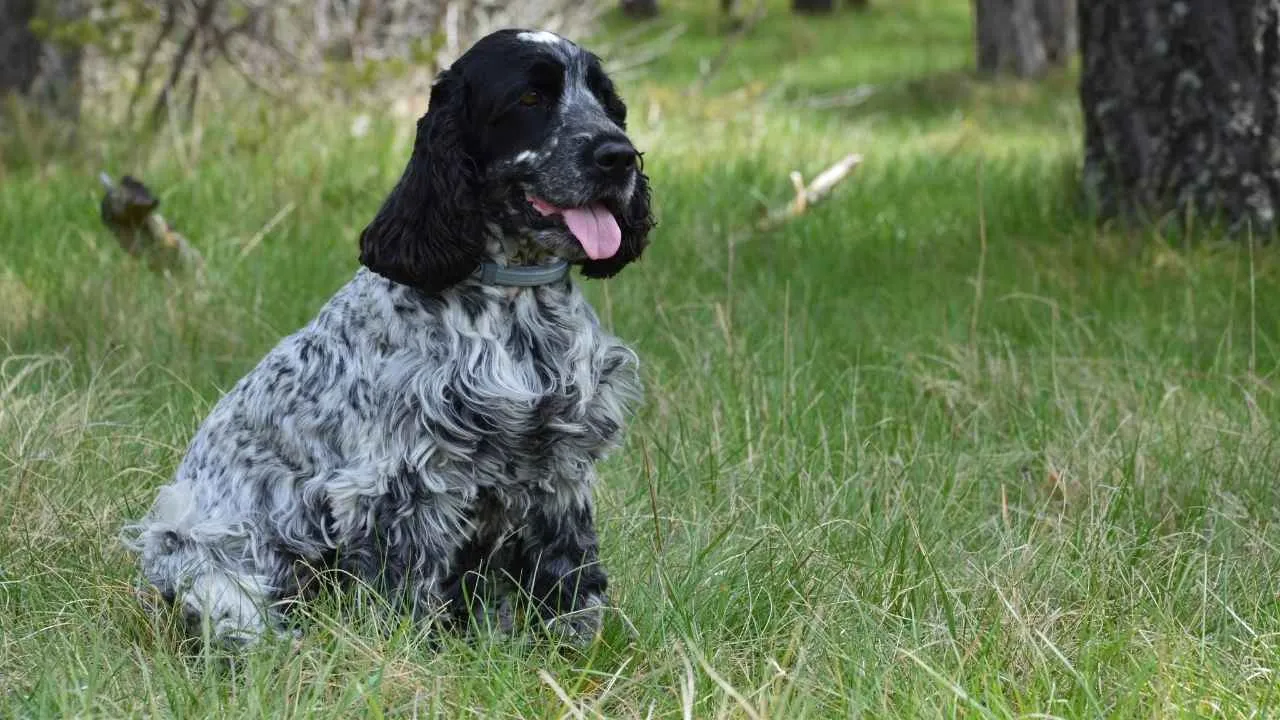
If Brittany is a field athlete, the English Springer Spaniel is the rugged outdoorsman—loyal, friendly, and built to run, sniff, and leap through the wild with joy.
Bred for flushing game, these dogs have a built-in zest for life that makes them ideal hunting partners, but also loving, energetic family pets. They’re known for their affectionate nature, and their enthusiasm for hanging out with humans is truly next-level. (Try going to the bathroom alone. We dare you.)
Springers are also great with children and usually do well with other dogs, as long as they’re socialized early. They have the perfect combo of gentle family companion and hardcore field athlete—kind of like if your favorite uncle also happened to be an Ironman competitor.
Since they’re bred for long days outdoors, they’ll need more than just a stroll around the block. Think long walks, daily runs, scent training, and agility courses to keep them sharp and satisfied.
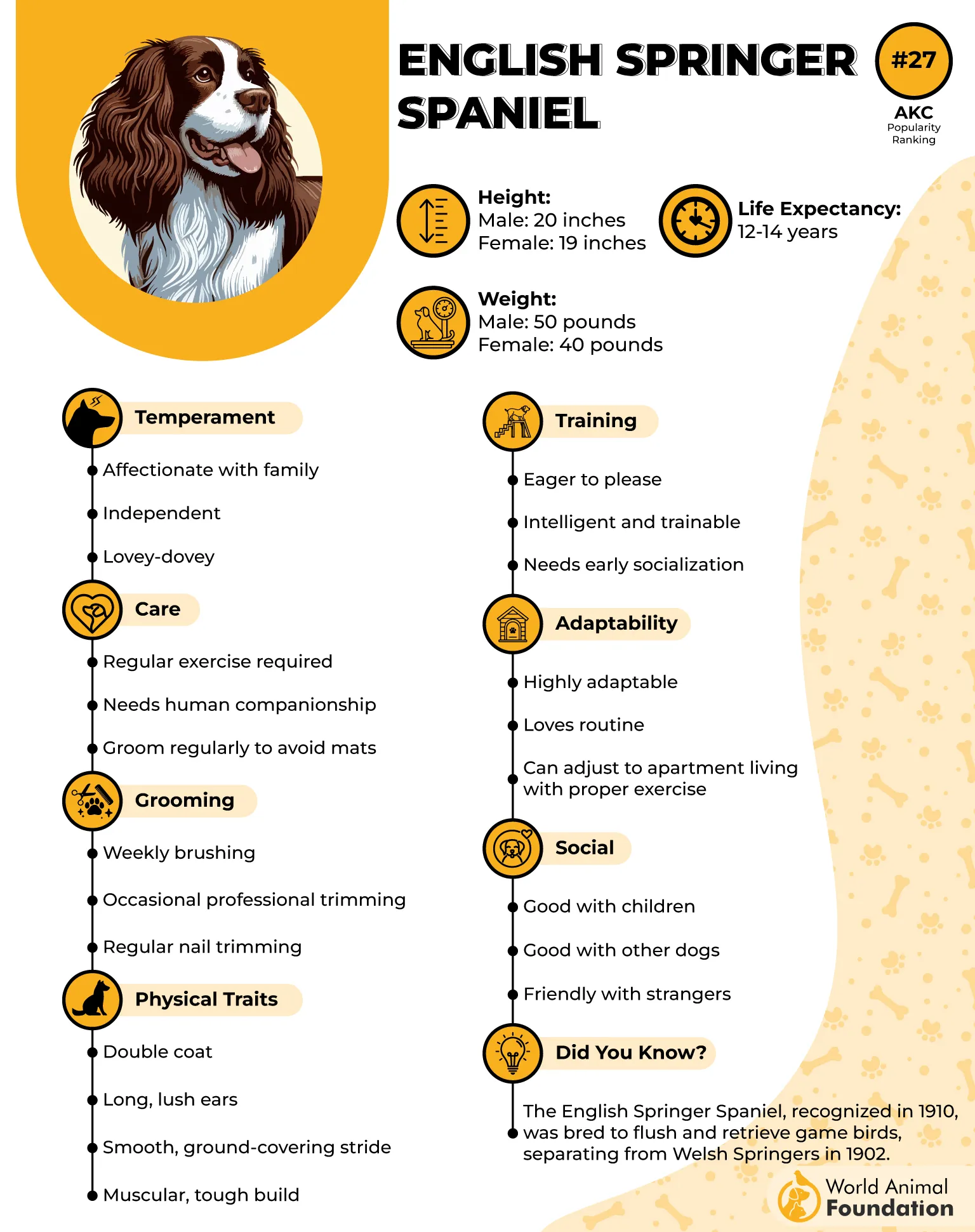
Springers excel in dog sports like obedience, flyball, and agility—basically, any event that lets them burn off that battery life they were born with. If you give them a job, they’ll give you their heart.
But beware—a bored Springer is a mischievous Springer. Without enough stimulation, don’t be surprised if they start redecorating your living room with chewed shoes or unplanned excavation projects in your backyard.
5. Russell Terrier
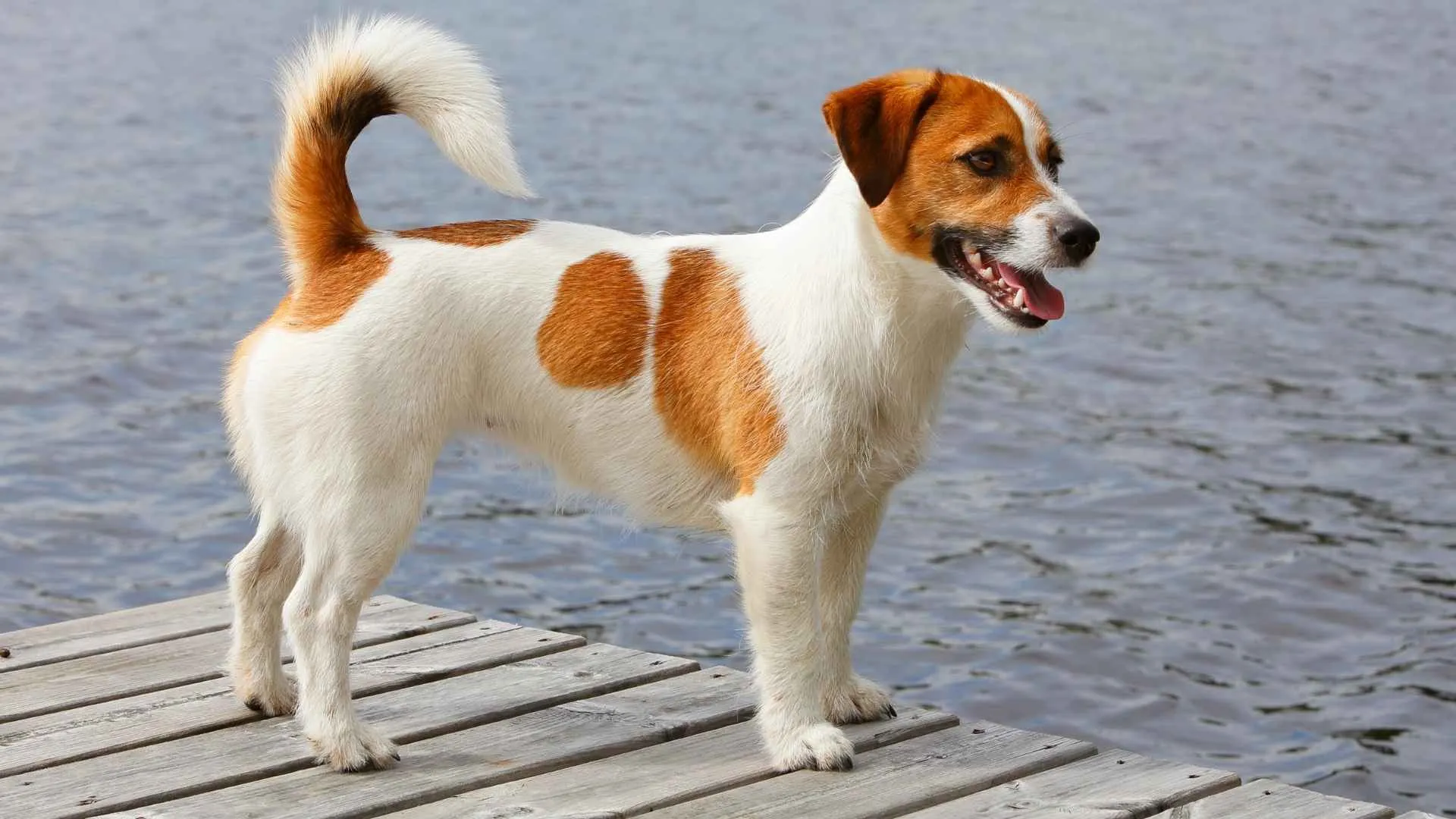
Tiny body. Titanic energy. Tends to run the household.
Originally bred to hunt foxes, the Russell Terrier comes with a “built-in Red Bull” setting. With their razor-sharp intelligence and instincts as sharp as their bark, they are the kind of dog that turns your backyard into a professional excavation site faster than you can say “leave it.”
These little dynamos were born to hunt, which is why they thrive in sports, agility contests, and even as therapy or service dogs—yes, they’ll soothe your soul right after chasing the neighbor’s squirrel halfway up a tree.
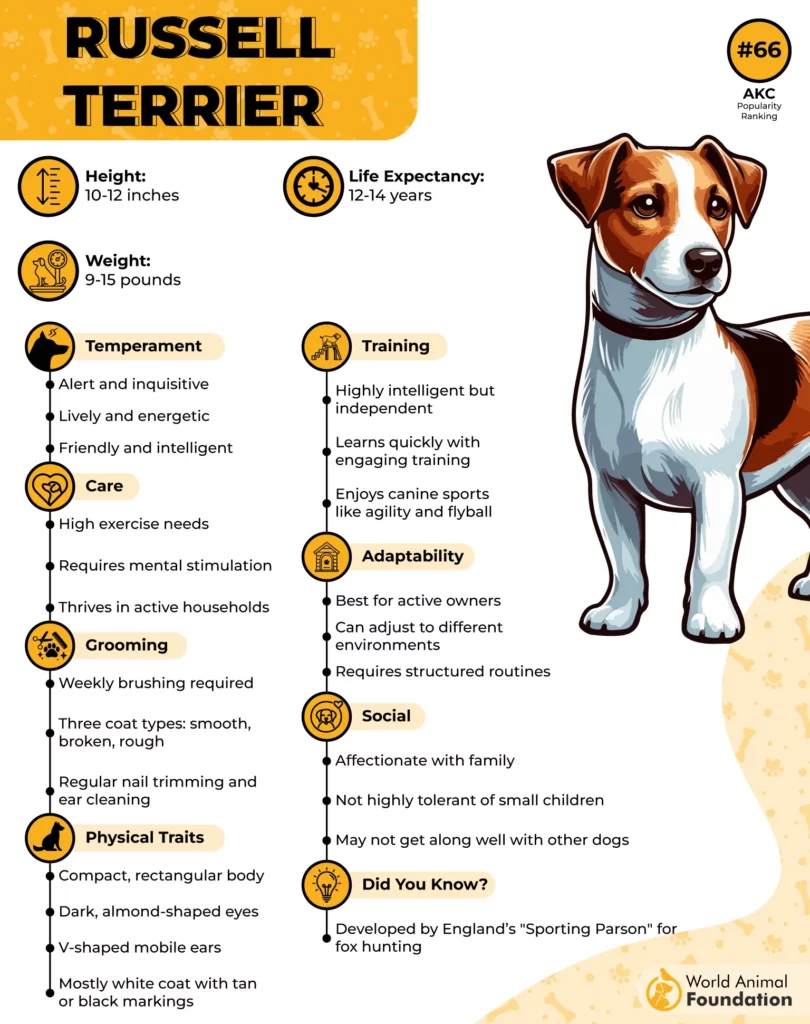
Their temperament? Think adorable gremlin with ADHD. They’re fiercely loyal, always alert, and sometimes a handful—especially for first-time dog parents. If you’re expecting a lapdog that lounges and watches Netflix all day, let’s just say… pick again.
Russell Terriers are diggers, chasers, and barkers—not because they’re disobedient, but because their hunting instincts are on overdrive. Their noses lead the way, and their bark could probably be heard across zip codes. So yes, your slippers will be hunted down like they owe them money.
To keep your Russell mentally and physically in check, plan for 90 minutes to 2 hours of exercise a day—and we’re not talking strolls. These dogs need action. Fetch, agility courses, nose games, obstacle runs—a daily Olympics.
Without enough stimulation? Say hello to shredded couch cushions, backyard craters, and possibly your favorite sock collection being held hostage.
6. English Setter
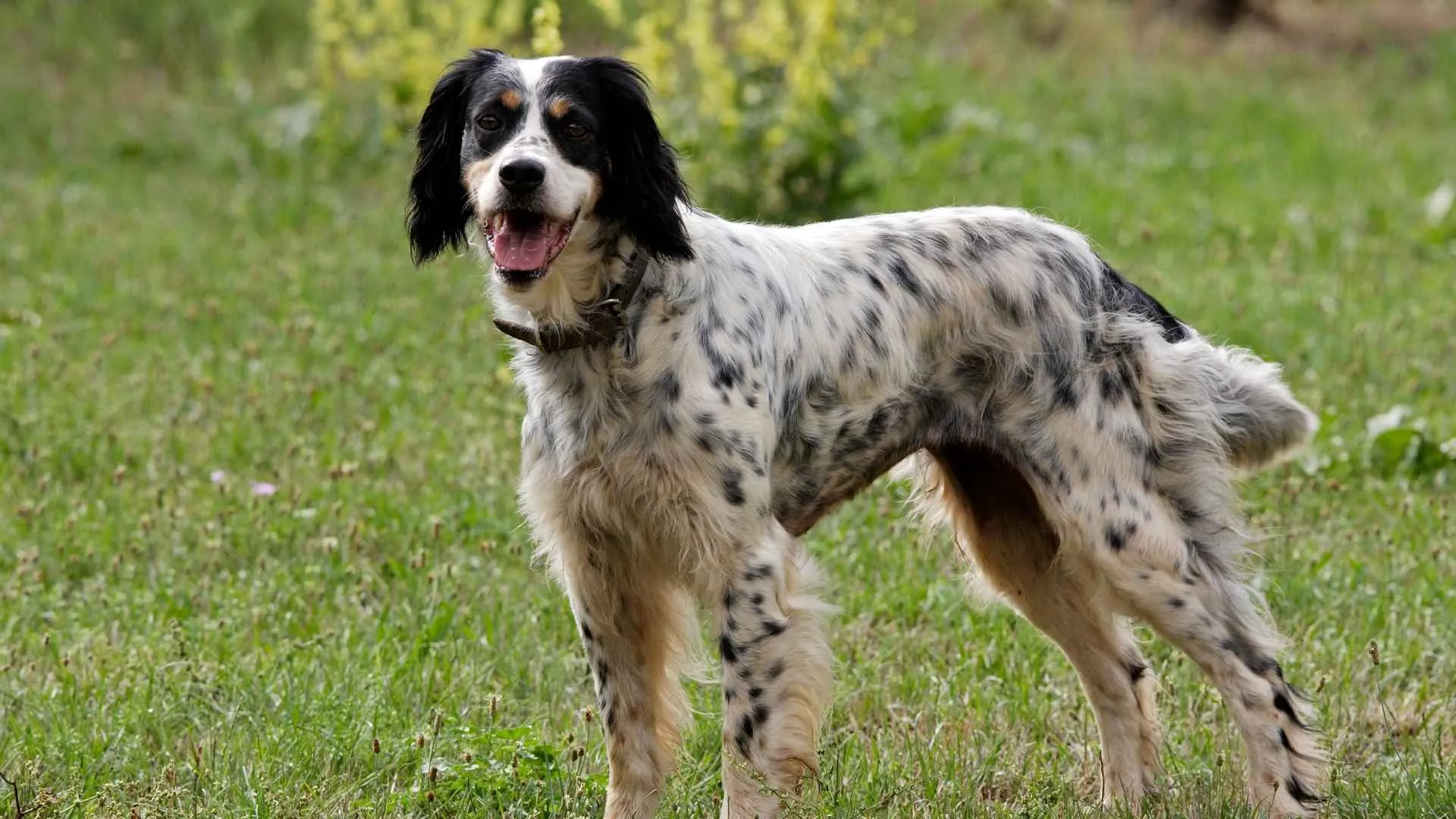
Looking for a dog that’s equal parts graceful and goofy? Enter the English Setter—a stunning, speckled sweetheart bred for the hunt, but soft enough to melt into your lap (after covering it in mud, of course).
These dogs are natural-born hunters, high-energy, and built to romp through fields, chase scents, and run for miles. If your idea of exercise is reaching for the remote, this breed will leave you behind—possibly with the leash still in your hand.
They’re also sociable and people-loving, known to form strong bonds with their humans and even their doggy friends. Family-friendly? Absolutely. Couch potatoes? Not.
They do shed moderately, so investing in a good vacuum—and maybe a lifetime supply of lint rollers—is a smart move. Regular brushing will help keep those flowing coats under control and save your furniture from turning into a fur sculpture.
Training them? Surprisingly smooth. English Setters are intelligent and eager to please, but also have a strong will, meaning they respond best to positive reinforcement. But don’t forget their inner watchdog—they’ll bark at suspicious squirrels, gusts of wind, or a leaf that moved wrong.
They require daily physical activity, like hiking, jogging, or long play sessions. A bored Setter will find ways to entertain itself, which may include “redecorating” your yard or chewing on things that were previously off-limits (like your new shoes).
English Setters aren’t a great fit for passive families or couch-huggers. If you’ve got a heart for dogs but not the energy, consider adopting a senior Setter—less chaos, just as much love.
Bonus tip: Some Setters drool occasionally. It’s usually harmless, but keep an eye out, as WebMD notes drooling can also signal health concerns.
7. Irish Setter
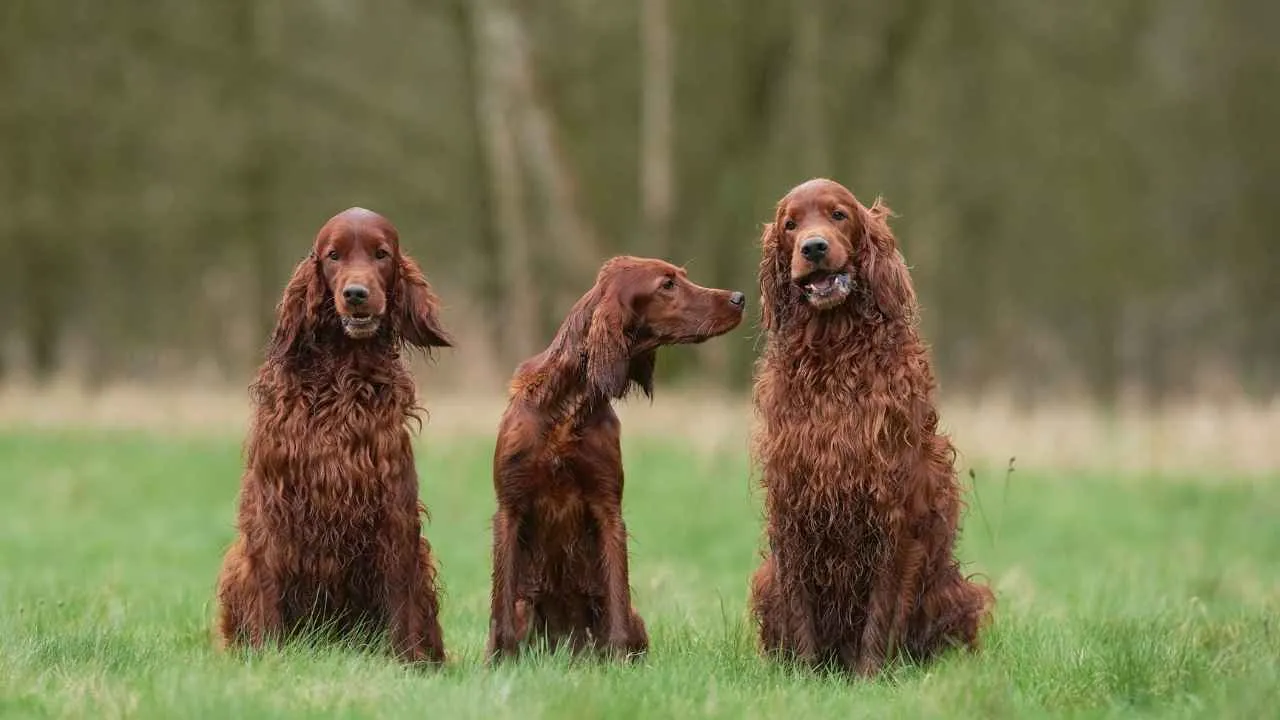
Irish Setters proudly strut into the Gundog group, a club of canine pros originally trained to find live game and retrieve anything that was shot but didn’t quite make it. With their long legs and athletic build (we’re talking 60-70 pounds of pure running machine), these large beauties are made for wide-open spaces, not your average apartment hallway.
Known for their friendly and affectionate nature, Irish Setters are the life of the family party. They adore kids, play nicely with other pets (including cats—provided they get the proper “hello” first), and have a genuine zest for companionship. Early socialization is key, so they grow up confident, sociable, and not convinced that every stranger is a squirrel in disguise.
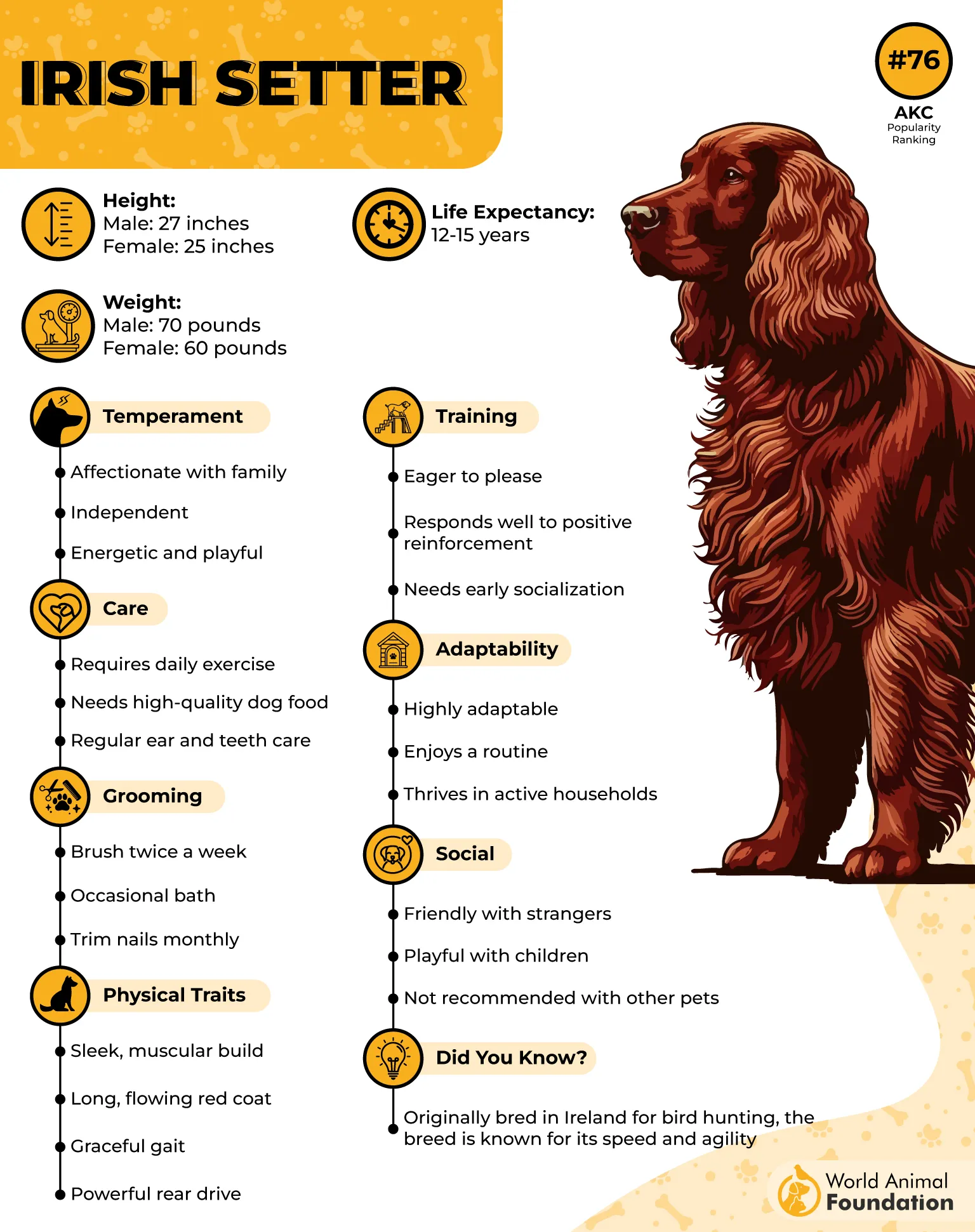
But beware the coat! According to the PDSA, to keep that glossy, flowing red fur looking runway-ready, your Irish Setter will need grooming 2 to 3 times a week. It’s the canine version of a weekly spa day. Without it, expect matting and tangles to turn your dog into a walking, wagging mop.
Exercise-wise, Irish Setters are the marathon runners of the dog world. They need at least 2 hours of activity daily to stay happy and healthy. These dogs have high energy levels and an independent streak that sometimes screams, “I’ll do it my way, thanks!”
Training might require patience and consistency, but the payoff is a well-mannered, joyful companion who also happens to be a superstar athlete.
While Irish Setters usually only bark when necessary, don’t let that fool you into thinking they’re low-maintenance. If left bored or lonely, they can turn into professional chewers or embrace other destructive hobbies (like redesigning your favorite shoes or redecorating your backyard).
Conclusion
High-energy hunting dog breeds are known for their strong work ethic, natural ability, and incredible stamina, making them ideal for bird hunters, upland game, and waterfowl hunting. These dogs are not only capable of flushing birds and tracking small game or even big game, but many also double as great family companions with a loyal, affectionate nature.
Breeds like the German Wirehaired Pointer, Deutsch Drahthaar, Boykin Spaniel, Labrador Retriever, Golden Retriever, Chesapeake Bay Retriever, and English Foxhound are standout choices. Many of these, such as the Chesapeake Bay Retriever—originating in the Chesapeake Bay area—and the Boykin Spaniel from South Carolina, were developed in the 19th century specifically for versatile field work. Their endurance and drive make them well-suited for challenging environments and tasks such as search and rescue and flushing upland birds.
Despite their high drive and purpose as field dogs or determined hunters, many also make great companions and loving family pets. With proper training and plenty of exercise, they transition well from the field to the living room. Their wiry coat or sturdy build gives them resilience in the outdoors while still being manageable for home life. If you’re an active individual or family seeking a versatile breed with a passion for hunting and a place in your heart, these high-energy hunting dog breeds offer the perfect combination of performance and companionship.


